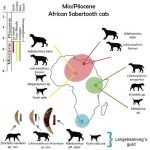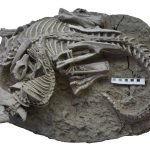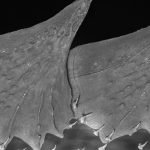Greenland used to be greener: A wake-up call about climate change
A new analysis of samples taken from beneath Greenland's ice sheet has revealed that the Arctic island was considerably greener as recently as 416,000...
Oxygen didn’t spark life in ancient oceans, new study shows
Ever wonder how life started on Earth?
For a long time, scientists thought that more oxygen in the oceans helped kick-start the development of more...
Scientists discover two new sabertooth cat species
Imagine meeting cats with long, saber-like teeth who lived millions of years ago!
Well, some scientists have just found fossils of two new types of...
Scientists decipher the secrets of Benjamin Franklin’s paper money
Benjamin Franklin is famous for many inventions, but now, a team from the University of Notre Dame has discovered that he should also be...
This living fossil thrived in Switzerland after mass extinction, shows study
Scientists have found that coelacanths, a type of strange fish known as a "living fossil," thrived in Switzerland following a mass extinction event about...
Scientists discover evidence of mammal attacking dinosaur in rare fossil
In an extraordinary find, Canadian and Chinese scientists have unearthed an incredibly well-preserved fossil from approximately 125 million years ago.
This remarkable discovery captures a...
How ancient fish developed their protective scales and shaped evolution
Around 350 million years ago, the ocean was full of soft-bodied animals, including some that would eventually evolve into humans and all modern vertebrates.
These...
The ground in cities is deforming, but our buildings aren’t ready
A recent study from Northwestern University has uncovered a link between underground climate change and the shifting ground beneath urban areas.
As temperatures rise, the...
Scientists discover a large earth-like granitic system on the moon
Granite is a rock formed by magma during volcanic activity, and it's mostly found on Earth.
But guess what? Scientists now believe there's a huge...
Europe’s hottest summer causes over 61,000 deaths
The summer of 2022 has been declared Europe's hottest ever, leading to heat-attributable deaths on an unprecedented scale.
As a result of record-breaking heatwaves, droughts,...










